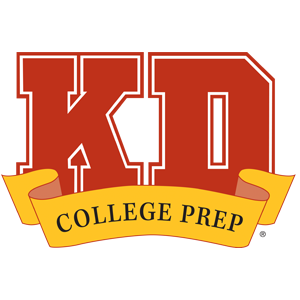During your final two years of high school, you’re likely looking forward to heading off to college (at last!) and pursuing your dreams for the future. But first, you still need to clear some test-taking hurdles. 11th grade is the time when we typically recommend most high school students should finish taking the SAT® and ACT® tests, although there are some exceptions.
If you aren’t feeling as confident as you’d like, or even if you are, now is the time to ramp up your test prep activities. Try these 11th grade testing tips to get started.
Navigate through this article:
How to Study for the SAT/ACT Tests in 11th Grade
Create a testing timeline at the beginning of the year
Before diving into these 11th grade testing tips, it’s a good idea to know exactly how much time you have to work with. During the summer before your junior year, you should sit down and create your ideal testing timeline. This will help you determine how much time you have to prepare for each exam. The exact test dates are subject to change, but here’s a look at what you can generally expect:
- PSAT/NMSQT Test® – Schools administer in October
- AP® Exams – Typically administered during the first half of May
- ACT Test – Usually administered seven times/year in September, October, December, February, April, June, and July
- SAT Test – Usually administered seven times/year in August, October, November, December, March, May, and June
When determining exactly when to take the SAT and ACT tests, it’s important to consider your other commitments. For example, you might not want to take the SAT test in October because you’ll be taking the PSAT/NMSQT test then. The same is true of taking both AP exams and the SAT test in May.
Sign up for a test prep program
If you haven’t already enrolled in a test prep program, it’s time. You’re likely to find that a structured test prep program will help you stay focused and on track toward meeting your targets far more effectively than trying to go it alone.
KD College Prep offers multiple options, such as the Complete™ Program, which offers workshops and lessons led by our experienced instructors. The program includes plenty of practice tests (reviewed by instructors), as well as impactful 11th grade testing tips.
If you are enrolled in a test prep program, you can also benefit from expert recommendations on a testing timeline that is unique to your goals.
Set a target score (if you haven’t already)
If you followed the advice in our previous article, 10th Grade Guide: How to Prepare for the SAT/ACT Tests, then you should have already become familiar with the score ranges for the colleges you’re thinking of applying to. If not, no worries! Choose a few colleges that appeal to you and then check their websites or Common Data Set for the average scores of accepted students. You’ll want to shoot for a score that meets or exceeds that range.
Brush up on your knowledge of test content areas
It’s difficult to do well on a test if you’re completely unfamiliar with its structure and content areas. Spend some time reading up about the general structures of the SAT and ACT tests, and the types of questions you can expect on the exams.
For example, the SAT test has the following sections:
- Reading – 65 minutes for 52 multiple choice questions
- Writing and language – 35 minutes for 44 multiple choice questions
- Math – 80 minutes for 58 multiple choice questions (including calculator-allowed and no-calculator sections)
The College Board recently eliminated the optional essay portion of the SAT test. Also keep in mind that this is for the paper version of the tests. Big changes are coming to the PSAT and SAT tests in Fall 2023.
The ACT test has the following sections:
- English – 45 minutes for 75 questions
- Math – 60 minutes for 60 questions
• Reading – 35 minutes for 40 questions
• Science – 35 minutes for 40 questions
• Optional essay – 40 minutes
Improve your reading speed
As you can see, for both tests, each section is timed. In order to do well on the exams, you’ll need to be able to read questions and the possible answers quickly. You’ll also have to navigate reading passages without spending too much time on them. If you aren’t already a fast reader, you’ll want to spend some time every day reading (beyond required reading for school) to improve your speed. Daily reading will also help you improve your reading comprehension.
Study grammar rules and read often
Another reason why daily reading is strongly recommended is that it will help you to subconsciously absorb the many grammar rules of the English language. Our 11th grade testing tips include actively studying the grammar rules you’ll be tested on. Here are a few commonly tested rules:
- Keep the verb tense consistent throughout a sentence. (Example: Wrong – “Jeanie petted the cat and mimics its purr.” Right – “Jeanie petted the cat and mimicked its purr.”)
- Use commas after starting a sentence with a dependent clause. (Example: “After petting the cat, Jeanie stood up to fetch some treats for it.”)
- Use apostrophes to indicate singular or plural possession. (Examples: “Jeanie’s cat” or “The kids’ cat.”)
- Make sure there is proper subject/verb agreement. (Example: Wrong – “The rats in that city is huge.” Right – “The rats in that city are huge.”)
For more tips, read this guide written by a KD verbal instructor and essay editor.
Work on your mental math skills to save testing time
The ACT test allows the use of approved calculators. The SAT test has a math section in which calculator usage is allowed, and one in which calculators are not allowed (with the paper-based format of the tests). It’s a good idea to improve your mental math skills to reduce the amount of time you spend on the no-calculator portion of the SAT test, as well as the calculator portion.
Continue to take practice tests and complete test reviews
No list of 11th grade testing tips would be complete without a mention of taking practice tests. Your online test prep program should include plenty of practice tests and instructor-led reviews. (If you’re enrolled in one of our programs, you’ll definitely have access to these!) Plan to take several practice tests periodically, and be sure to time yourself on each section.
Don’t sign up for an upcoming test without reviewing your practice test results so you can correct your mistakes and avoid making the same errors in the future.
Take the PSAT/NMSQT test for National Merit® Scholarship consideration
If you enjoy the thought of getting free money for college, then the PSAT/NMSQT test is one that you can truly look forward to taking. By taking this test in your junior year, you may qualify to enter the National Merit Scholarship program. This is an academic competition, and the PSAT/NMSQT test serves as a gateway to enter it.
It’s important to note that even if you took the PSAT 8/9 and/or the PSAT 10 test, you’ll still need to take the PSAT/NMSQT test in order to qualify for the National Merit Scholarship Program. The only opportunity you’ll have will come in the fall of your junior year, so be sure to mark it on your calendar and ask your guidance counselor about it well in advance.
Though highly competitive, about 7,250 Finalists each year are selected for a National Merit Scholarship award. Even if you don’t make it to the final round of selection, doing well on the PSAT/NMSQT test may qualify you to compete for other scholarships, including corporate-sponsored scholarships. Plus, it’s great practice for the SAT test, as the sections (reading, writing, language, and math) are quite similar.
Plan to try both the SAT and ACT tests
Exactly when you should take the SAT and ACT tests for the first time is up to you and may depend on individual factors, like sports schedules and family commitments. It’s a good idea to avoid waiting until the last possible test days of the year to take the tests for the first time. Leave yourself time so that if you’re dissatisfied with your scores, you’ll have the option of retaking them. Even if you’re happy with your first set of scores, you may want to retake the tests to see if you can do even better.
Again, an expert recommendation for a custom testing timeline may be extremely helpful!
Evaluate your SAT and ACT test scores
Earlier in this article, we recommended that you set a target score or score range for the SAT and ACT tests. Once you receive your score reports, you can compare your performance to your target scores. How did you do?
If you met your target, exceeded it, or almost got there, congratulations! If you didn’t do as well as you’d hoped, it’s time to take a closer look at the sections you struggled with. You’ll definitely want to retake the test that you struggled with—after spending more time studying and working through your online test prep program.
Plan to retake your stronger test at least one more time (if applicable)
Even if you met, exceeded, or nearly met your target score for one of the exams, it can be a good idea to retake it. Often, students find that they achieve a higher score on their second attempt. Keep in mind that many colleges accept superscores, meaning they will take the highest section score results for multiple test attempts.
Ask for additional help (if needed)
If you’re struggling to reach your target score range, it may be time to reach out for additional help. For example, even if you’re already enrolled in our online test prep program, you may benefit from one-on-one tutoring to help you overcome any problems you’re experiencing with specific sections of the tests. In-person and online sessions are available.
Finish testing by the end of 11th grade
At KD College Prep, we generally recommend that students finish their testing by the end of 11th grade. This is because you’ll have plenty more college-related activities to address in your senior year. Namely, you’ll want to complete all of your applications, do your college visits and interviews, apply to scholarships, etc. It can be a little overwhelming to deal with all of that on top of retaking the SAT and ACT tests.
But, don’t worry if you need to continue to test into 12th grade. Many students do so for a variety of reasons.
Is the PSAT/NMSQT test harder than the SAT test?
The PSAT/NMSQT test is slightly easier than the SAT test. It’s also a little shorter, requiring less testing time and fewer questions. In addition, you’ll have a bit more time to complete the math questions.
What is a good score for the PSAT/NMSQT test?
When you receive your score report for the PSAT/NMSQT test, you’ll notice that it looks a bit different than the score report for the SAT test. For instance, while the highest possible score on an SAT test is 1600, the top score for the PSAT/NMSQT test is 1520. In addition to displaying your scores, you’ll also see your percentile—how well you did compared to others taking the test. Although the percentiles are subject to change from year to year, here’s a general breakdown:
- 1370 – 1520: Elite
- 1200 – 1360: Excellent
- 1080 – 1190: Above Average
- 960 – 1070: Average
- 320 – 950: Below Average
Read more about PSAT score ranges.
Should I send my SAT test scores to colleges as a junior?
One of the most important things to know about sending your SAT test scores to colleges is that you can choose to either 1) Opt to send your scores before you actually know what those scores are (free option) or 2) Pay extra fees to send your scores after you’ve received your score report.
You can certainly choose to send your SAT test scores to colleges as a junior if you wish. This option may be right for you if you already know for sure which colleges are on your shortlist and you’re fully confident about the outcome of your SAT test. However, you may want to wait until after you see your score report if any of the following apply:
- You aren’t quite sure which colleges you want to apply to yet
- You haven’t been scoring as well as you’d like on practice tests
- You think you may need to retake the tests in 12th grade
You also might simply like the peace of mind of knowing what your scores are before you send them. If you’re prone to stress, it may be better to wait. Likewise, you may decide that you do indeed need to retake the tests in the fall of your senior year.
What are good test scores for 11th grade?
College Board has released SAT test score benchmarks by grade level. Meeting or exceeding these benchmarks indicates college readiness. For 11th grade, the medians are as follows:
- Evidence-based reading and writing – 460
- Math – 510
But keep in mind that college-bound students will want to score much higher than the median. If you have already tested and fall below the bar, KD can help you improve your performance.
Need help preparing for upcoming tests?
Wherever you are in your test prep journey, the friendly team at KD College Prep can help you achieve new heights. Contact us today for a free consultation to discuss which of our test prep programs might be right for you. We work with students from 7th through 12th grade, offering comprehensive test prep programs and college counseling.














































